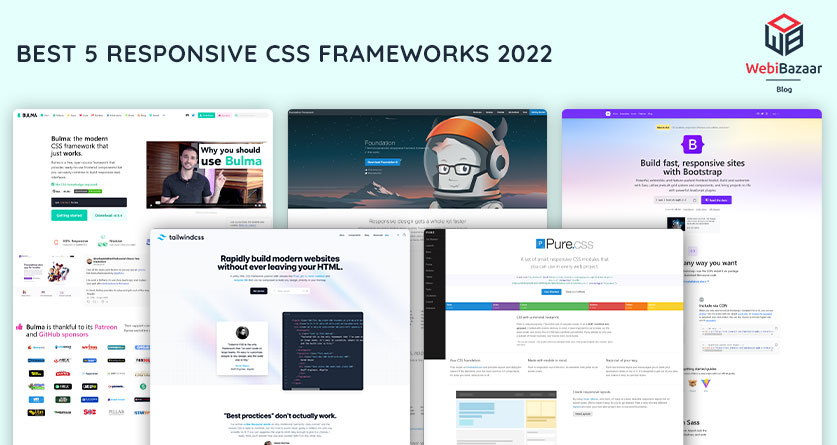Daily Insights
Stay updated with the latest trends and news.
CSS Frameworks That Will Make You Question Your Styling Choices
Discover the CSS frameworks that could change your design game forever—prepare to rethink your styling decisions!
Top 5 CSS Frameworks to Elevate Your Design Game
When it comes to web development, choosing the right tools can significantly impact your design efficiency and effectiveness. Among the myriad of options available, CSS frameworks stand out by providing a solid foundation for building responsive and visually appealing websites. Here are the Top 5 CSS Frameworks that can help elevate your design game:
- Bootstrap - Known for its extensive pre-designed components and grid system, Bootstrap allows developers to create responsive layouts quickly.
- Tailwind CSS - A utility-first framework that promotes custom designs without overriding styles, Tailwind CSS is perfect for developers looking to create unique interfaces.
- Bulma - With a modern look and easy-to-use syntax, Bulma makes it straightforward to design beautiful websites without any JavaScript dependency.
- Foundation - Built by ZURB, Foundation is a responsive front-end framework that offers customizable components and a focus on accessibility.
- Materialize CSS - This framework is based on Google’s Material Design principles, providing a fresh and clean aesthetic that enhances user experience.

How to Choose the Right CSS Framework for Your Project
Choosing the right CSS framework for your project can significantly impact your development process and the final output of your website. Start by evaluating your project's requirements and complexity. Consider factors like responsiveness, browser compatibility, and the need for components. Popular frameworks such as Bootstrap and Foundation offer extensive component libraries and mobile-first design principles, making them ideal for projects that require a robust framework. On the other hand, for more lightweight projects, frameworks like Bulma or Tailwind CSS provide flexibility and a clean design without the bloat.
Once you have a shortlist of frameworks, look into the community support and documentation available. A framework with a strong community often equates to better support, frequent updates, and a wealth of third-party tools and resources. Additionally, check out the learning curve associated with each framework. If your team is already familiar with certain frameworks, it may save time and improve efficiency. Ultimately, the right CSS framework should enhance your workflow while meeting your project's needs without unnecessary complications.
Are You Making These Common CSS Styling Mistakes?
When it comes to web development, even small CSS styling mistakes can lead to significant issues in the overall design and functionality of a site. Common errors include using overly specific selectors, which can make your stylesheets less maintainable and harder to debug. For instance, instead of defining styles for a class, some developers might resort to applying styles directly to an element with multiple parent identifiers. This approach can lead to conflicts and unintended consequences in style application. It's crucial to keep your CSS clean and organized by utilizing straightforward selectors and avoiding the temptation of over-specification.
Another frequent CSS styling mistake is neglecting the power of the box model, which can cause various layout problems. Many developers forget to account for properties like margin, padding, and border, leading to designs that don't render as intended. To enhance your understanding, consider reviewing the box model by breaking down elements into their components. Furthermore, be cautious about using fixed units such as pixels; instead, opt for relative units like em or rem for better responsiveness across different devices. Addressing these common pitfalls will not only improve your CSS efficiency but also enhance the user experience on your site.